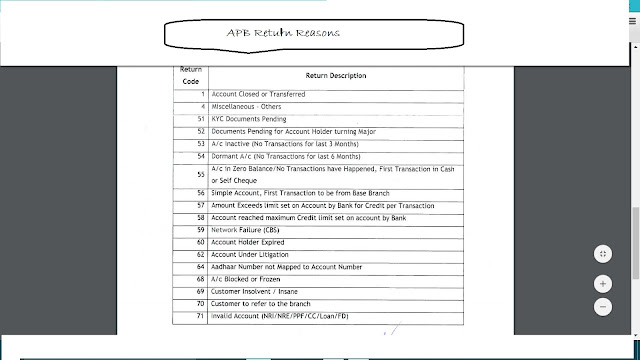Indian e₹ (Digital Rupee) Interest Bearing (Remunerated) Or Non-Interest Bearing (Non – Remunerated)
The classic question is – Should interest be provided for deposits held in e₹ (Digital Rupee) accounts.
Reserve
Bank of India concept note released to the public highlights the pros and cons of
Remunerated CBDC and Non-Remunerated CBDC.
As
the launch date comes closer, there will be more visibility on the interest
part on Indian e₹ (Digital Rupee)
A couple of extracts are as under:
Remunerated CBDC
The payment of (positive) interest
would likely to enhance the attractiveness of an instrument that also serves as
a store of value.
Some proponents support interest
bearing CBDCs as it could improve the effectiveness of monetary policy by
shifting the transmission leg from overnight money market rate to directly
deposit rate (or CBDC as a substitute of deposits), strengthening the
pass-through of the central bank’s policy rate to the broader structure of
interest rates in the financial system.
But, designing a CBDC that moves
away from cash[1]like
attributes to a “deposit-like” CBDC could lead to a massive disintermediation
in the financial system resulting from loss of deposits by banks, impeding
their credit creation capacity in the economy.
Further, in such a scenario,
banks may be compelled to increase deposit rates, thus increasing their costs
of funding and a decrease in Net Interest Income.
As a response to this, banks
could be motivated to pass on these additional costs to borrowers or resort to
engage in riskier activities in search of higher returns.
Moreover, banks would need to
maintain additional liquidity buffers to support CBDC demand, as access to
large central bank and money market liquidity would need to be backed by
eligible collaterals.
One possible way to mitigate the
risk of disintermediation is to impose a cap or limit on individual holdings
but these features will reduce the attractiveness and wide acceptability of
CBDCs along with adding complexities to the CBDC system
Non – remunerated
CBDC
If a CBDC is designed to be
non-interest bearing, the public would have less incentive to switch from
holding bank deposits to CBDC, and the effect of banking disintermediation
would then be limited.
The Bahamas and China currently
do not pay interest on CBDC holdings.
In both cases, the reason is
to limit CBDC's competing with bank deposits.
If there is no interest, CBDC can
still be attractive as a medium of payment, even while its attractiveness as a
store of value (savings instrument) diminishes.
Further, non-interest-bearing
CBDCs can avoid major disruption to banking services and possible
disintermediation of banks.
However, there is still a concern
expressed in some quarters that there could be a possibility of shifting some of the current accounts maintained by corporates and business entities
with banks in favor of CBDC to gain access to central bank money.
Reserve Bank of India believes that
the current account is a relationship based and their association with banks is
a function of multiple services offered to them and thus it is anticipated that the scale of bank intermediation will be low for such deposits
Disclaimer: These are my personal views only. The bottom line
is Safe ePayments. Nothing More-Nothing Less.
Errors, if any, are mine only.
Copyright if any, belongs to the original copyright holder
only.
#stealtime



How to Apply SBI Credit Card? What are necessary documents
ReplyDeleteTop 10 Highest Selling EV Bikes [ Electric Vehicle ] in India 2022-23
Rivian Stock, Share Price Prediction 2023, 2025, 2040 to 2050
Top 10 Best Dark Chocolate Brands in India
What Is Groww App? Open Demat Account, Trading and Invest in Mutual Fund
Top 10 Tourist Places in Gujarat?
Top 10 Tourist Places to Visit in Assam
Top 10 Tourist Places to Visit in Rajasthan
What is Allen Institute? Detail: How to Get Admission, Fee Structure, Courses and Scholarsh